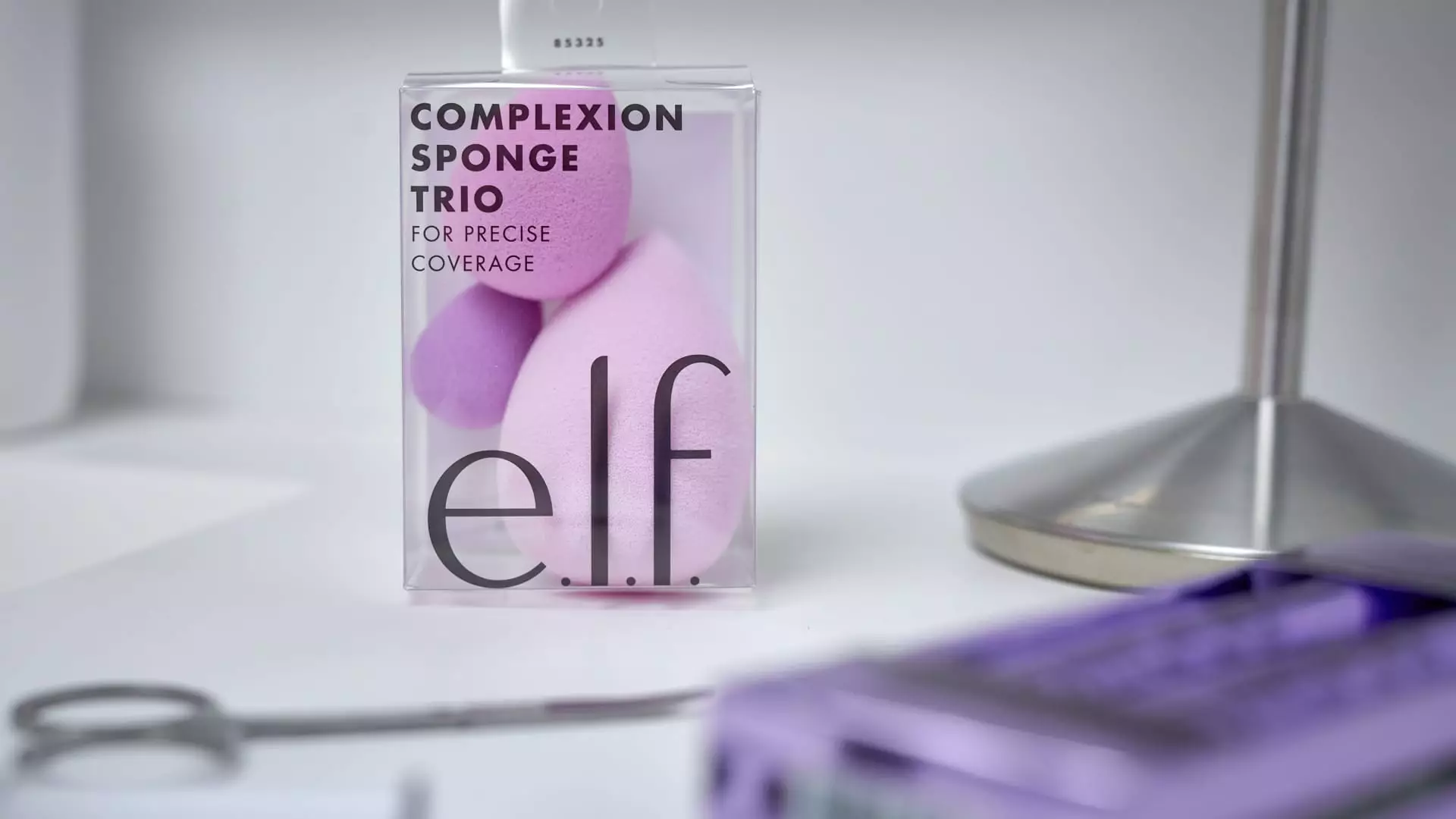The beauty industry is notoriously fickle, and even a brand that has enjoyed meteoric success can be made vulnerable by shifting sales trends and external economic forces. E.l.f. Beauty, once a darling of the cosmetics market, has recently encountered difficulties that resulted in a significant adjustment of its full-year projections. Following a surprising 36% decline in profits and a softer-than-anticipated sales performance in January, E.l.f. saw its shares plummet by over 20% in after-hours trading. This article explores the implications of these setbacks for the company and the beauty sector at large.
E.l.f. Beauty’s latest financial reporting highlights a challenging landscape for the cosmetics brand, marking a deviation from its previously robust performance. During the fiscal third quarter, E.l.f. reported earnings per share of 74 cents—slightly lower than the 75 cents anticipated by analysts—and a revenue of $355 million, surpassing predictions of $330 million. However, the profit figure showcased stark weaknesses; net income decreased from $26.9 million or 46 cents per share a year ago to just $17.3 million or 30 cents per share this time around.
The company’s revised expectations for the fiscal year signal uncertainty. Initially positioned to earn between $1.32 billion and $1.34 billion, projections have been dialed back to a range of $1.3 billion to $1.31 billion, falling short of analysts’ consensus. Further bearish sentiment is directed toward anticipated adjusted earnings per share, which are now projected between $3.27 and $3.32 compared to previous estimates around $3.54. Such a downward revision of forecasts could indicate to investors that E.l.f. is facing headwinds that may not be temporary.
E.l.f. CEO Tarang Amin identified broader issues within the beauty industry that have impacted his company’s recent sales figures. Notably, the mass cosmetics sector experienced a 5% decline in January—a phenomenon Amin attributes to several detrimental factors. Among them, he pointed to the resonance of the holiday shopping season, which may have dulled consumer enthusiasm in the weeks that followed. Additionally, he referred to disruptions in social media engagement, specifically mentioning constraints related to natural disasters like the LA wildfires and broader uncertainties surrounding the popular platform TikTok.
These observations underscore how rapidly evolving consumer behaviors can drastically impact sales. While social media is a critical battleground for beauty brands—serving as a primary channel for consumer connection—E.l.f. has remarked on its declining presence, referring to the concept of “social commentary.” The dips in beauty-related discussions online could be hindering not only E.l.f’s growth but also serving as a warning sign for other companies within the sector to closely evaluate their own digital engagement strategies.
Despite the discouraging news, E.l.f. Beauty remains committed to deploying a prudent strategy in response to current challenges. The company’s leadership is not preparing for radical shifts but instead aims to stabilize its operations through strategic investments. Amin indicated that E.l.f. is channeling profits back into infrastructure enhancements and inventory management improvements, which are essential for long-term growth. Importantly, the company continues to focus on international expansion, signaling its intent to reach new markets despite domestic hurdles.
Moreover, E.l.f. has previously gained a reputation for its innovative marketing approach and cost-effective product offerings, often replicating the appeal of luxury brands without the exorbitant price tags. As a result, it has successfully attracted a broad and diverse demographic, which now must be carefully cultivated amidst changing market dynamics.
Adapting to market conditions—the hallmark of a resilient business—remains paramount for E.l.f. Beauty. As it navigates this turbulence, the brand is evidently aware of the need to recalibrate its strategies in accordance with rising consumer expectations and technological trends. While the short-term forecast may look challenging, the company’s emphasis on responsible fiscal management and investment in growth initiatives positions it for potential recovery.
As shifting consumer preferences emerge and the beauty industry evolves, E.l.f. must maintain a keen eye on maintaining its footing not just as a growth leader but as a trusted brand. Engaging with its customer base through various platforms, including social media, and sustaining its commitment to affordability without sacrificing quality will be crucial. In facing the current landscape, E.l.f. Beauty may learn that adaptability is the key to overcoming adversity and reclaiming its place at the forefront of the beauty market.

